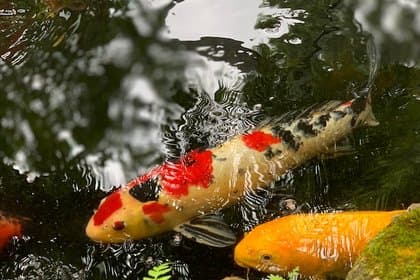Maximizing Coarse Fish Production in Sport and Leisure Fisheries
Sport and leisure fisheries play an important role in the recreational fishing industry, providing a place for anglers to catch a variety of fish species. Among these, coarse fish are a popular choice for both recreational anglers and fishery owners. This article aims to provide an overview of the methods and strategies for maximizing coarse fish production in sport and leisure fisheries.

Sport and leisure fisheries have become increasingly popular in recent years, providing a source of recreation for fishing enthusiasts and a source of income for fishery owners and clubs. Growing coarse fish for these purposes can be a challenging task, but with proper management and care, it can be a rewarding and profitable venture.
Types of Coarse Fish
Coarse fish refer to a group of fish that are typically found in freshwater, and are not typically considered to be game fish. Some examples of coarse fish include carp, bream, roach, and perch. These fish are often used for sport fishing and are also commonly used for stock fish in lakes and ponds.
Factors to Consider When Growing Coarse Fish
When growing coarse fish, there are several key factors to consider in order to ensure the health and well-being of the fish. These include:
- Water Quality: The quality of the water in the pond or lake is crucial for the survival and growth of the fish. This includes factors such as pH levels, temperature, and dissolved oxygen levels.
- Feeding: Proper feeding is essential for the growth and health of the fish. This includes providing a balanced diet that is appropriate for the species of fish being grown.
- Disease Prevention: Disease can be a major problem for fish populations, so it is important to take steps to prevent and control the spread of disease. This can include regular monitoring and testing of the fish, as well as taking steps to prevent the introduction of disease-causing organisms into the fishery.
Stocking and Harvesting
When stocking a fishery, it is important to consider the carrying capacity of the pond or lake, as well as the size and age of the fish being stocked. The fish should be of a suitable size and age for the environment in which they will be living.
Harvesting of the fish should also be properly managed, to ensure that the fish population is not over-harvested and that the fishery can continue to be productive. This can include using appropriate fishing methods and regulations, as well as monitoring the fish population to ensure that it remains healthy.
Conclusion
Growing coarse fish for sport and leisure fisheries can be a challenging task, but with proper management and care, it can provide a source of recreation for fishing enthusiasts and a source of income for fishery owners and clubs. By considering factors such as water quality, feeding, disease prevention, stocking and harvesting, it is possible to maintain a healthy and productive fishery.
No comments yet, be the first to share your thoughts!
Newsletter
Sign up for our newsletter and stay up-to-date on the latest tips, tricks, and techniques in carp fishing. From beginner to expert, our newsletter offers something for every level of angler. Do not miss out on exclusive content, product reviews and fishing reports that will help you catch more carp.
Related Posts
Attitudes towards Carp Fishing Around the World
almost 3 years ago
The Ultimate Guide to Choosing the Best Landing Net for Carp Fishing
almost 3 years ago
The Best Carp Fishing Spots in Italy
almost 3 years ago
The Ultimate Guide to Chest Waders for Carp Fishing: Top 10 Picks
almost 3 years ago
Zebrafish: A Model Organism for Biological Research
almost 3 years ago
How to Catch Carp with Bread
almost 3 years ago